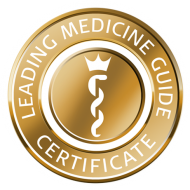The elbow joint is one of the most important and most heavily strained joints of the human body. However, arthrosis and rheumatoid arthritis can damage the joint, especially the thin layer of articular cartilage. The result is pain and in the end the joint becomes immobile. In order to be able to use the elbow joint again without pain, many patients in this stage of the disease need a joint replacement and turn to a special clinic for elbow prosthetics.
Recommended specialists
Article overview
Elbow endoprosthetics - Further information
Elbow prosthetics - pain-free thanks to joint replacement
Artificial elbow joints are not visible from the outside and the arm behaves like the original. In reality, however, the elbow prosthesis is made of a metal, often titanium because of its durability. The artificial joint surfaces are also often made of polyethylene, a plastic that reduces friction in the joint and basically replaces the joint cartilage surfaces.
Normally, an elbow prosthesis lasts between 10 and 15 years, depending on the degree of use and age of the patient. However, if the joint loosens in the bone or becomes inflamed, the elbow prosthesis must be surgically removed and a new prosthesis fitted.
Does the artificial elbow joint function reliably?
Immediately after the operation, the elbow joint is immobilised for some time so that bone, skin and tissue can heal. Depending on the surgical method and personal requirements, the stay in the special clinic for endoprosthetics can last between five and seven days. In rare cases, i.e. when the patients are significantly older, it may be necessary to stay in hospital for up to two weeks.
As soon as the splint has been removed, the actual mobilization of the elbow prosthesis begins. In contrast to hip and knee replacement, no inpatient rehabilitation is necessary. The patients learn in physiotherapy how to gently use the new elbow joint, since stronger loads cannot be placed on the joint indefinitely. This means, for example, that playing golf or tennis, higher weights than one to two kilograms and other things should be avoided, which would normally put strain on the elbow joint.
Specialists in Orthopaedics and Trauma Surgery
As a rule, the elbow prosthesis can be fully used after about six weeks, provided that no inflammations or complications have occurred. The risk of such events also decreases with the selection of a specialist centre for endoprosthetics. The doctors working there are usually specialists in orthopaedics and trauma surgery with extensive experience in their respective fields.
The basis for the orthopaedics and trauma surgery specialist is several years of further training with a high proportion of practical experience, during which the prospective specialists learn mainly from operations performed by themselves.
Important certification for endoprosthetics centers
On the initiative of the DGOOC (German Society for Orthopaedics and Orthopaedic Surgery) and with the cooperation of two specialist societies (AE - German Society for Endoprosthetics, BVOU - Professional Association for Orthopaedics and Trauma Surgery), a certification system called EndoCert has been in place throughout Germany since 2012.
This enables specialised endoprosthetics clinics, which are primarily concerned with joint replacement, to be certified as an endoprosthetics centre or optionally as an endoprosthetics centre for maximum care. For you as a patient, this first and foremost means safety with regard to the necessary equipment and personnel requirements for the success of your operation, e.g. the use of an elbow prosthesis.
References
- endocert.de
- flexikon.doccheck.com/de/Gelenkendoprothese














